With a Little Help From the Seals Part II
It isn't easy to restrain a southern elephant seal. They are by far the largest carnivore on the planet - males are more than six times bigger than a polar bear and 2.5 times bigger than a male walrus. Females max out at somewhere between 1,000 and 2,000 pounds (400-900 kg) and about 9 feet (2.7 meters) long, but an adult male averages closer to 7,000 pounds (3,175 kg) and up to 19 feet (5.8 meters) long. While the ocean environment is where they really shine, they can move across land at an estimated 5 mph. Although their size and strength make it very challenging for researchers to temporarily subdue an elephant seal, they are also exceedingly valuable as data collectors because they regularly dive deeper than 2,000 meters in search of food. The deepest-recorded dive by a southern elephant seal was almost 7,000 feet (2,133 meters) deep. They can hold their breath for up to 100 minutes and then are experts at finding holes in the ice through which they can breathe when they return to the surface. An elephant seal with a tag attached to its head could provide vast amounts of information to an oceanographer trying to create a more detailed picture of water temperature and salinity at different depths, and to an ecologist hoping to learn more about the diving behavior and travel patterns of this species - but first the taggers have to catch one. It is exactly as difficult as it sounds.
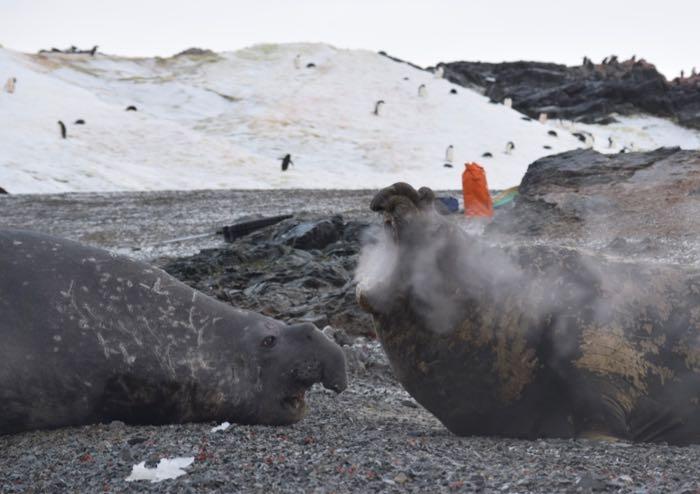
Foremost on the minds of Lars and Gui is the well-being of the animal. They will use a short-lived sedative to anesthetize the seal while they collect biometrics (information about the animal's length, girth, a general assessment of its health and a DNA and fecal sample) (fecal = poop) and attach a tag to the crown of its head using a quick-drying, super-strong adhesive. With elephant seals, they use an epoxy that sticks the tag to the short, thick hair that has grown after the seal completes its annual molt. The male on the right in the picture above is still molting - the lightish-brown fur is falling off in chunks (literally - chunks of hair and skin can be found on rocks all over the island) and new, darker hair is replacing it. While this process is underway, the seals typically stay on land, clustering with other elephant seals to stay warm, and not going in the water at all. The seal on the left in the picture has likely just arrived to begin the process of molting and, with a few nasty words to his friend, probably moved further inland and found a spot to post up for the foreseeable future. Neither of these two seals were good candidates for tagging - due to both the stage of molting AND their size - each likely weighed more than 5,000 pounds and would have been nearly impossible to handle.
Just a short distance up the beach, Lars and Gui found another, smaller elephant seal that had completed its molting and was sitting in a good location. Because the anesthesia wears off quickly but not immediately, there is a concern about tagging animals too close to the water's edge - if a seal went back into the water before the sedative completely works its way out of their system, there is a risk that the animal could drown. Lars and Gui prefer to find seals resting at least a short distance from the water line that they can safely monitor as the sedative fades and ensure the animal is fully awake before returning to the ocean. Once they have identified an elephant seal they want to tag, the real work begins. Step One: they discuss a strategy for approaching the seal and for injecting the anesthesia. There are two techniques, and each has pros and cons. First method is for two people - usually Lars and another researcher, Mark Barham (who is also on the seal tagging permit FCO No. 03/2019-20), to place a green canvas bag over the seal's head and attempt to restrain it enough for Gui, who is a trained veterinarian, to quickly locate a large blood vessel that runs along the seal's spine and inject a pre-measured amount of sedative directly into the animal's bloodstream. This technique has the advantage of working quickly and requiring the smallest dosage of medicine - because it goes right into the blood, the effect sinks in in less than a minute. However, the challenge comes from having two guys, whose combined weight is probably in the neighborhood of 350 pounds, trying to stop the movement of a 2000+ pound animal. They also have to rely on the quality of their equipment, and the first seal ripped right through a new head bag like a runner bursting through a ribbon at the finish line of a race. The team switched back to an older, sturdier head bag and tried again.
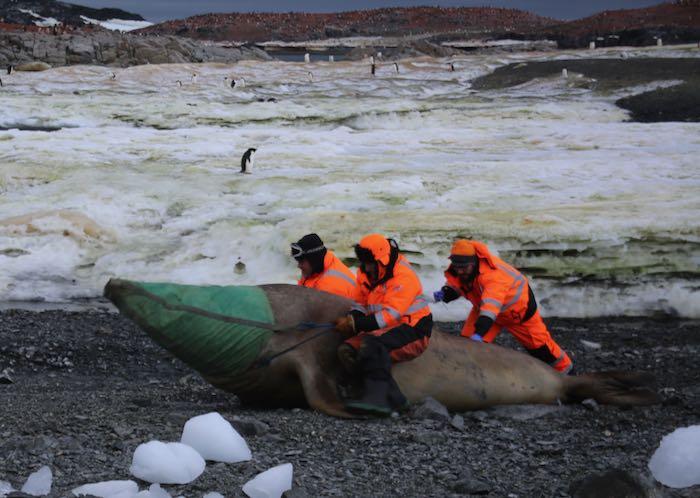
In a second strategy, Gui uses a rudimentary blowdart to anesthetize the animal. Because seals have such a thick layer of blubber under their skin, they feel almost no pain from the application of the dart and because they don't have any natural land predators, they aren't afraid as Gui approaches with the dart. The disadvantage of this technique is that it is a lot less precise - the seal taggers can't be sure that an appropriate amount of sedative has gotten into the bloodstream, and it takes much longer for the drugs to take effect.
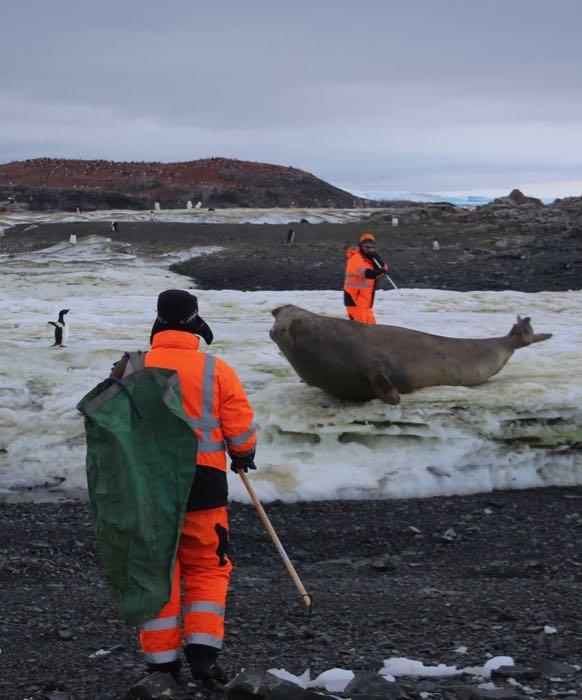
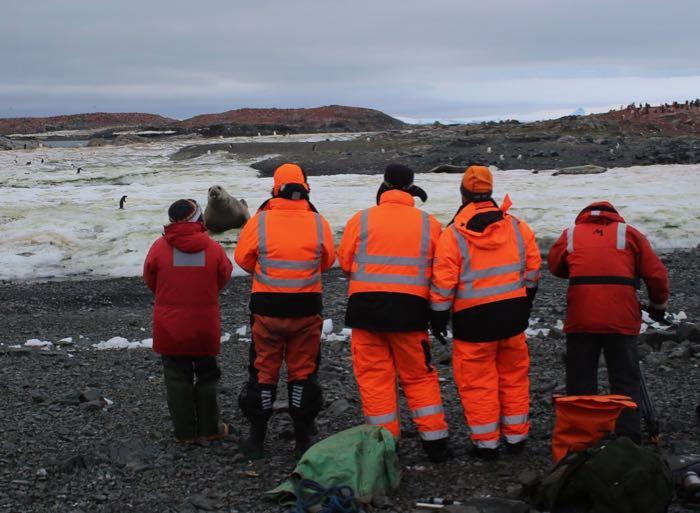
Once the sedative has kicked in, the scientists get to work assessing the biometrics of the elephant seal. Researcher Natalie Swaim records the information as they call it out, and Mark, Lars, and Gui move as quickly as they can through the steps of data collection and application of the tag. The epoxy doesn't work well in the freezing temperatures of an Antarctic island, so they have to warm it up a little in a thermos of hot water. It also takes 15 minutes for the adhesive to set and often requires another partial dose of sedative to protect the animal's well-being while the team finishes all the steps of the procedure.

Included with the sedative is a chemical that erases any memory of trauma so when the seal finally does fully wake up, it might be in a slightly different location than it remembers being, but otherwise is entirely unaffected by the process (well, I mean, it does now have a tag attached to its head, but seals don't spend much time looking at themselves in a mirror so they probably don't even realize their headgear looks a little silly).
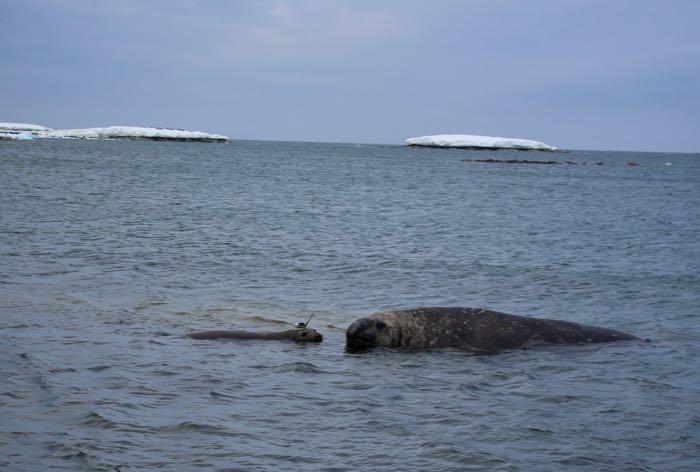
Lars, Gui, and Mark take turns standing between the newly-tagged seal and the water to provide additional time for the sedative's effects to fade, before finally stepping aside and allowing the animal to return to the ocean if they choose. Some seals swam away after being tagged, some went right back to sleep, and some moved into the water and watched us clean up the tagging site.

The process for tagging Weddell seals is slightly different - more on this tomorrow.


Comments